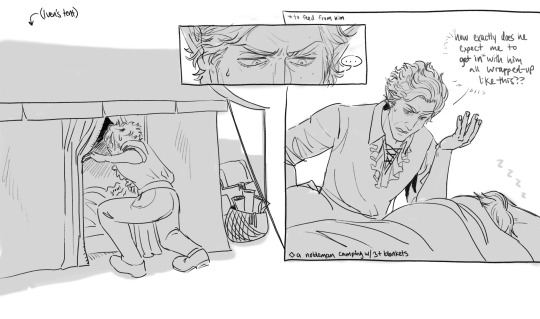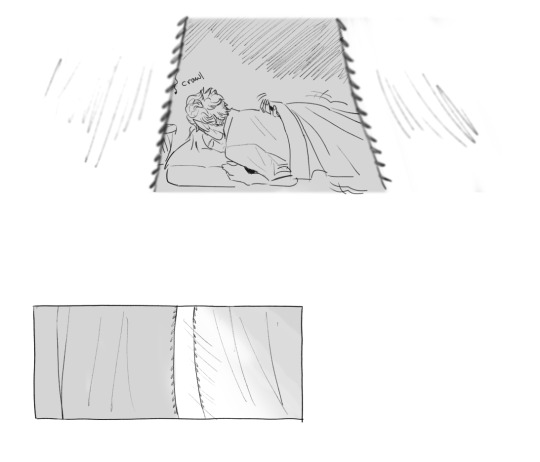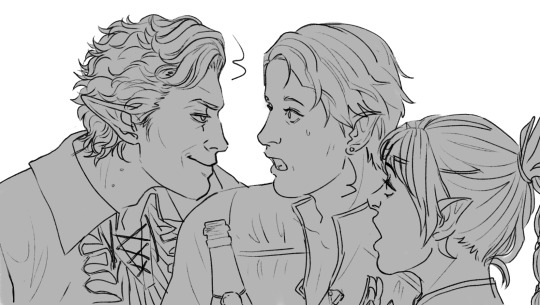#iven art
Explore tagged Tumblr posts
Text





Bloodless? 🩸
#baldur's gate 3#astarion#bg3#astarion x tav#iven art#tavstarion#inspired by how many times he's told me he'll come after bed to feed like... good luck I'm under 5 burritoed blankets#i've seen so many messy hair astarion posts I wanted to draw it and the comic came after#i am very slowly learning how to panel comics thanks for watching
7K notes
·
View notes
Text
Flying!! Windwalker is freeee with a little hiccup on top (toothless is curled up inside his jacket)
#digital illustration#animation#digital art#digital drawing#httyd books#hiccup#httyd#illustration#commisions open#dragon#Windwalker#toothless (I believe that he is there iven if you can’t see him)#flying
49 notes
·
View notes
Text

The Meeting of Wind and Storm
#original character#original#original art#ancient tales of forgotten gods#iven the wind#deanir the prince of storms
6 notes
·
View notes
Text

betrayal
12 notes
·
View notes
Text

lighting practice with my oc ivene (critiques open + welcome)
#art#original art#artists on tumblr#oc#original character#digital art#ivene#cosbytales#cool lighting#poc artist
4 notes
·
View notes
Text

Esper started out as a sonic oc but as i fell out of the sonic the hedgehog lore, overtime she became another furry oc in addition to my fursona
I'm still proud of how far she's come, as her own character and as the symbol of the progression of my art style.
2 notes
·
View notes
Text
Was gonna write like a sad apology letter from Iven to accompany this piece but ngl I kinda fucked it up with the markers

Woops (said with the utmost sorrow)
#traditional art#original character#original characters#.market loiters#GUYHHHHHHHHBH idcc#iven paymper#and jennys name is already a tag and i dont mean to clog that one up w my oc :(#🩸a tasty morsel#💥#its okay we post failures up in here#tw suggestive
0 notes
Text


they just put up with our bullshit
#baldur's gate 3#astarion#iven tag#Halsin#shadowheart#gale dekairos#gale of waterdeep#bg3#astarion x tav#i saw a couple screenshots of selena telling tswift some story and the reactions of them and then these two who were NOT INVOLVED killed me#sylphy art
1K notes
·
View notes
Text

#klinik#dirk ivens#absolute body control#sonar#dive#noise#industrial#Experimental#music#art cover#the klinik#belgium#ebm#electro#ebm music#industrial ebm#old school ebm#harsh ebm#industrial music#electronic#record cover#vinyl cover#cover art#cover#noise rock#noise music
1 note
·
View note
Text





michealis and ivene (ivene is the one with the eye patch and michaelis is the ugly shit)
1 note
·
View note
Text
WOAH the first introduction of my actual MC whattttt :000
that won’t be happening often

pardon the background i hate doing them lol This is Ev! My Golden Trio Bro (Jayden should kinda be there too but he isn’t part of the actual Golden trio so he is absent)
Full name is Evarin Aldrich Whitewood, he comes from a Pureblood Family, where his Parents are fond of older and more Fancyish names(though he doesn’t have the fanciest name out of the three Whitewood Kids :).
Relationship Chart:

Not everyone is there, as i did cut out antagonists and characters he has no relationship with/doesn’t even know who they are.
If you can’t tell, Ev doesn’t like people all that much, he’s rather solitary and studious, only having a few close friends.
My whole 'au' kinda story thing is split up all between like seven of these characters, all being the main characters of different seasons and having their different friend groups. For instance, Ev is not all that great of friends with Kevin, Robyn, Lottie, and so on.
-His seasons are:
-The Mysterious Malady
-Intercontinental Wizard’s Cup
-A Light in the Dark
Along with those, he has the main storyline, and the majority of the Quests, but not all.
-Fun lil details:
House: Slytherin
Patronus: Komodo Dragon
Wand: English Oak, 11.8 inches, Phoenix Feather Core
Born: Nov. 28th 1996(Part of the Cutoff Crew, with Daniel, Robyn, and Kevin)
-His favorite Classes are Defense Against the Dark Arts and Transfiguration, and although they aren’t classes, he enjoys Dueling and plays Quidditch as a Chaser.
He might not strike you as the biggest Quidditch fan, especially seeing as he prefers to spend most of his time studying and such, but he uses the games and practices as time to get his mind off of certain things.
(Which was partly short lived, as the Freys became the Team Beaters a year or so after he made the team himself. Though he has to admit…they aren’t exactly a hindrance to the team, as he feared they would be)
-Being a Slytherin, Ev shares a Dorm with both Daniel and the Frey Brothers, so you can imagine how divided that room is..and not just in friend groups and opinions of each other.

Evarin is a bit of a Neat-Freak, though not to an extreme degree. He can’t focus in a messy space, and very much prides himself in his attentiveness.
The Frey Twins are the complete opposite and prefer to use the floor as their storage space rather than their trunks or drawers. Ev can excuse a lot of things, but actively leaving your room looking like an Erumpent rampaged through it is not one of them. Daniel is better, but does often have organized messes.
yes i felt like drawing a room layout with a mess i don’t know why, help
*Also for context in my story Daniel is a Slytherin and Ivy is a Ravenclaw, yes i split up the Golden trio i’m sorry Ivy just doesn’t fit Slytherin imo…so i went with what the official art put her as :>*
Anyhow that’s all i feel like writing on this one cuz it’ll get too long, so yurrr
Feel free to ask questions about Ev, the relationships with canon or other of my oc’s, or really just anything relating to him.
You can ask on this post or use my ask box, and if you’re awkward about asking just as i am, go ahead and do an Anonymous Ask :DD
~Thank you for reading this whole thing~
p.s. Who should i introduce next :000
-Jayden
-Adelyn
-Alicia
-Iven
-Merri
-Tamara
#Despite being my main mc#Ev is not in fact my favorite hpma oc#hpma#hp magic awakened#harry potter magic awakened#hpma mc#hpma oc
60 notes
·
View notes
Text
About Jungkook's Wlive
I finally watched Jungkook’s Wlive and caught up on translations on Twitter (my day was so hectic I missed everything, and to top it off, I didn’t even get the notification for the Wlive—just his post). Honestly, Jungkook’s house is so him. It’s sleek, stylish, and has this cool vibe that feels uniquely his. I read that he specifically asked fans not to go near his house or send him things, and I really wish those so-called “fans” would take his words seriously. It’s such a simple request, and it’s heartbreaking that he even has to say it. Maybe it would’ve been better if he hadn’t confirmed that he’s already moved in? I’m unsure, but I hope this doesn’t become a bigger issue for him.
What stands out to me about Jungkook is how much of an artist he is at heart. He’s so passionate about singing—it’s like he genuinely can’t live without it. The way he talks about it, how he says that he and Jimin can’t help but start singing or humming the moment they get a chance—it’s clear that music is his lifeblood. That kind of pure love for his craft is so inspiring to see, especially in an industry where external achievements like awards and records often overshadow the art itself. For Jungkook, it’s not about chasing those things. Of course, they’re amazing milestones, but you can tell they’re not his main drive. He just loves to sing, to create, and to share that with the world.
And isn’t it funny how he can stay away from social media for what feels like ages, only to show up unannounced on a random Wednesday night doing a Wlive, just because he misses his fans? That spontaneity it’s so him. Moments like these remind me why BTS fans, the real ones, are so devoted to them. They’re not just artists; they’re genuinely connected to the people who support them.
iven the timing of the Wlive and the fact that he did it, it seems like he’s on holiday, right? That’s fantastic. I really hope he’s able to take a proper break, settle into his new house, and spend quality time with his family and friends. It was incredible to see him, hear his voice, and know that he’s doing well—missing the stage as always, and of course, his fans too.
Seeing him during the Wlive, hearing his voice, and knowing that he’s doing well—it was such a comfort. He looked healthy and full of that familiar longing for the stage and his fans. It’s a reminder of how deeply he cares, not just about performing but about the connection he has with ARMY. Moments like these feel so special because they’re not scripted or planned; they’re just Jungkook being Jungkook.
Hopefully, he can get some proper rest during his holiday, enjoy his house to the fullest, and maybe, when he’s able, drop by to say hi to us again hahaha!
73 notes
·
View notes
Text

Here are all of my art fight attacks this year! I had a lot of fun, I can’t wait until next July!
Credits in Appearance Order :
Human - lucaniamc on insta
tuna/finn - strooms on artfight
Evelyn - Naguimarr on twitter
Einar - InTheAether on artfight
Theseus - @eaudecrow
Spencer - @just-iven-here
Maxwell - @starcandymiracle (flash warning for the gif)







5 notes
·
View notes


